Many Mac users have encountered the message that their startup disk is almost full. The appearance of this message varies with different versions of the Mac operating system.
To be clear, this message announces that you have reached the free space on your hard drive. Your Mac warns you with this message because the Mac needs at least 10% of free space to function properly.
Additionally, if your hard drive runs out of free space, your Mac's performance will noticeably decrease, and various issues and errors may occur.
For this reason, I recommend not ignoring this warning about running out of space on the startup disk.
Unfortunately, there are some users who ignore this message and later look for information to solve this problem. Good news, there are several methods to save space on your Mac even without deleting your media files or other important data.
To make cleaning the hard drive easier, Apple some additional features introduced with macOS Sierra and later on improving hard drive.
In this article, I describe all the methods to efficiently optimize and clean your Mac's hard drive.
The startup disk is almost full
Check storage
The first thing you can start with is checking the status of your startup disk storage. This feature displays colored graphs that are categorized to show the actual usage of your storage.
Each category has a different color and also shows a summarized amount of space occupied. This way it's easier to decide where to look for files to get some free space.
To check the status of the save, first click on it Applelogo in the menu bar at the top of the screen and then tap “About This Mac”. Once the new window appears, select the Storage tab. Your Mac will now calculate the storage.
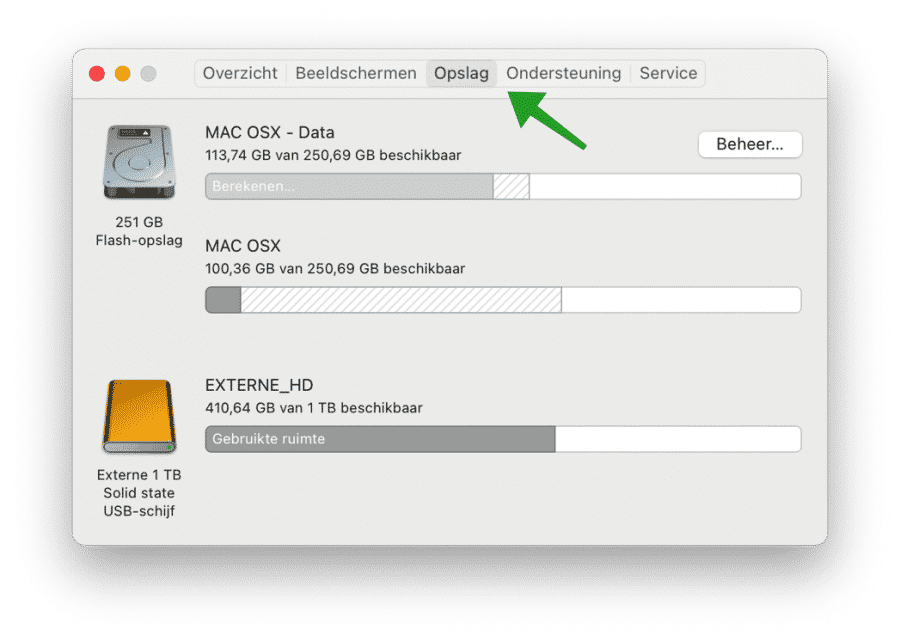
One of the most common category, which consumes a lot of hard disk memory backups. If you see that this category uses a huge storage capacity, I recommend that you check the backup files stored on your computer's hard drive, often deleting some old, unused backup files is sufficient.
Another category, which is responsible for a large part of the storage space other storage, documents or in some versions photos, videos and downloads.
In case you run out of free space, you can view the contents through these folders. Since movies usually take up a lot of space, it's better to move them to an external hard drive.
Find large files via Mac Finder
Another useful feature that helps make your storage more efficient are filters in Finder.
The macOS explorer called Finder contains a handy filters function, where you can set a lot of different filters to find large files.
A more useful tool to detect and delete large files on your Mac is CleanMyMac.
To locate large files via Finder, you must first open Finder on your Mac. Then type the combination command + F simultaneously on your keyboard.
A search window will now open. Type your search query. Click This Mac. Then click the + icon.
A second line will now open starting with Sort, click Sort to set the search criteria to identify large files by Finder on your Mac. Select Other…. from the list.
Then type file size in the search criteria field. Check the box “in the menu” and confirm with OK.
In the next step you will filter by file size on your Mac. Note that “This Mac” is still selected, because you want to search in your Mac and not in just one folder.
Adjust the filter options by file size, is greater than, the number, and then KBs – kilobytes, MBs megabytes or GBs gigabytes.
A good starting point is to filter files (file size) through Finder that are larger than 500 MB.
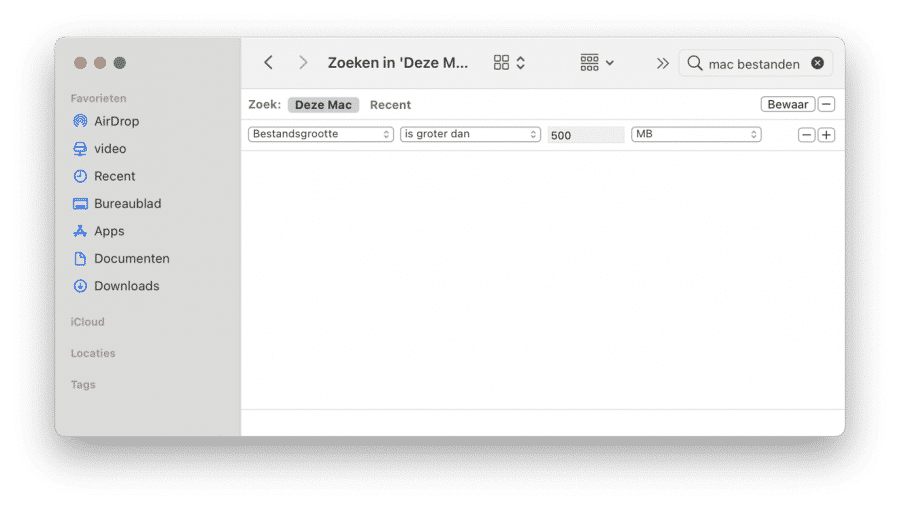
Now check if there is an application or file that you want to delete and select the file and then place it in the trash.
Check the Downloads folder on your Mac
Often the Downloads folder hides many unnecessary large files, such as installation files, archives and other file formats.
Many users forget the files they downloaded, only when free space runs out, deleting the contents in the Downloads folder is one of the easiest ways to gain some extra space on your Mac hard drive.
Open the Downloads folder by opening Finder and selecting Downloads from the left sidebar.
Then click the Size tab to sort files by their size. This way you can identify the largest files and folders and choose whether to keep the files or folders or not.
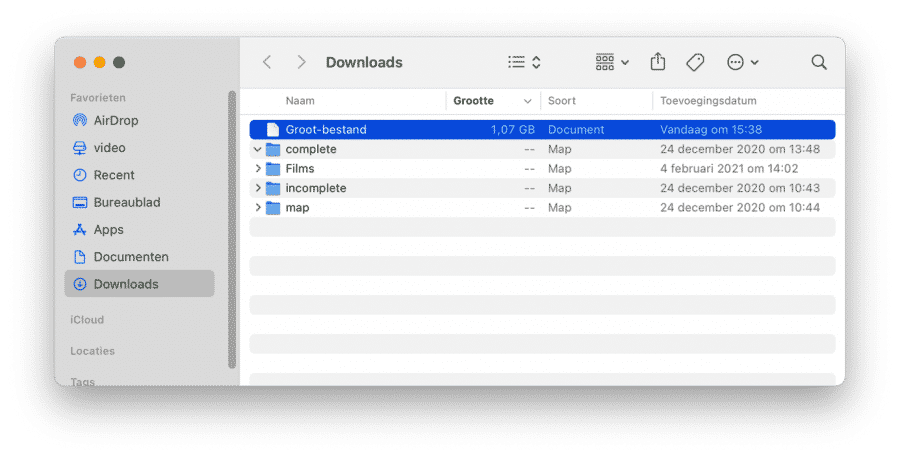
Empty Trash on your Mac
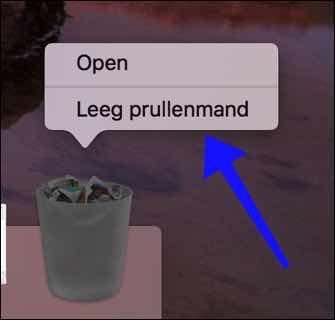 Files moved to the Trash are not immediately deleted from the Mac hard drive.
Files moved to the Trash are not immediately deleted from the Mac hard drive.
The actual amount of hard drive space where the data in the Recycle Bin resides may come as a big surprise to many Mac users.
Going to the Recycle Bin will only delete files from visible folders, but these folders and files will still remain on your hard drive.
To clean the Trash, right-click the icon in Dock and select Empty Trash, or open the Trash to delete certain files specifically.
It sounds obvious, but there are often files in the trash that you don't see and that still save a lot of disk space after emptying them.
Use storage optimization tools on Mac
Apple With Mac (High) Sierra, added a number of built-in optimization and diagnostic tools called Recommendations.
This recommendations tool on your Mac is intended to manage disk space or troubleshoot software and hardware problems.
Recommendation also brought with it a number of options that we can use to save space on our startup disk, among others, such as Save to iCloud, Optimize Storage, Empty Trash Automatically and Clean Up Documents.
To open the Mac Recommendations tool, click on it Apple icon at the top left of the menu, select About This Mac and go to the Storage tab. Click on the Manage button here.
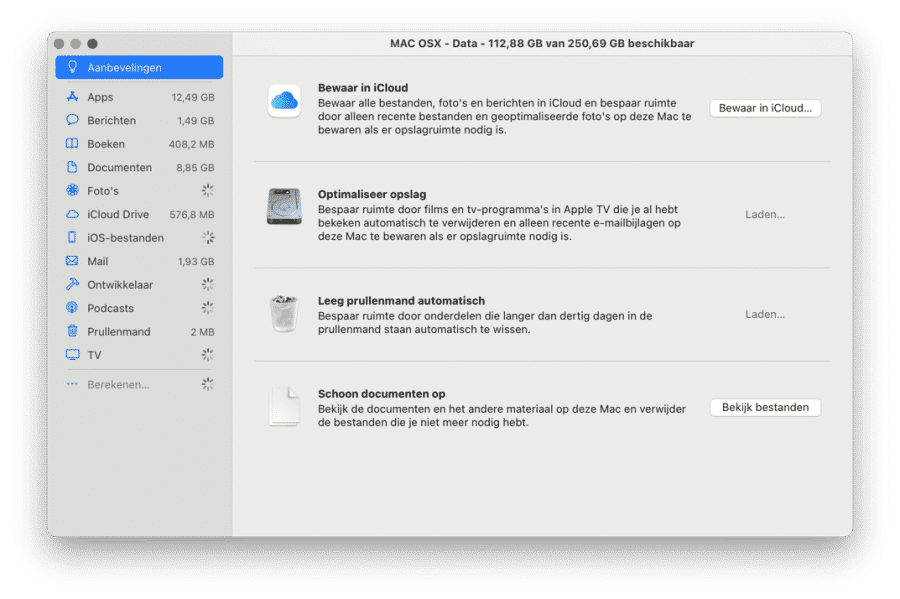
Save to iCloud
Save to iCloud saves space by automatically moving files and photos to iCloud, or deleting movies, TV shows, and email attachments when storage space is needed.
Files and media content will not be stored in iCloud if the Mac hard drive contains more than 10% of available free space. Files are only moved to iCloud if there is less than 10% free disk space.
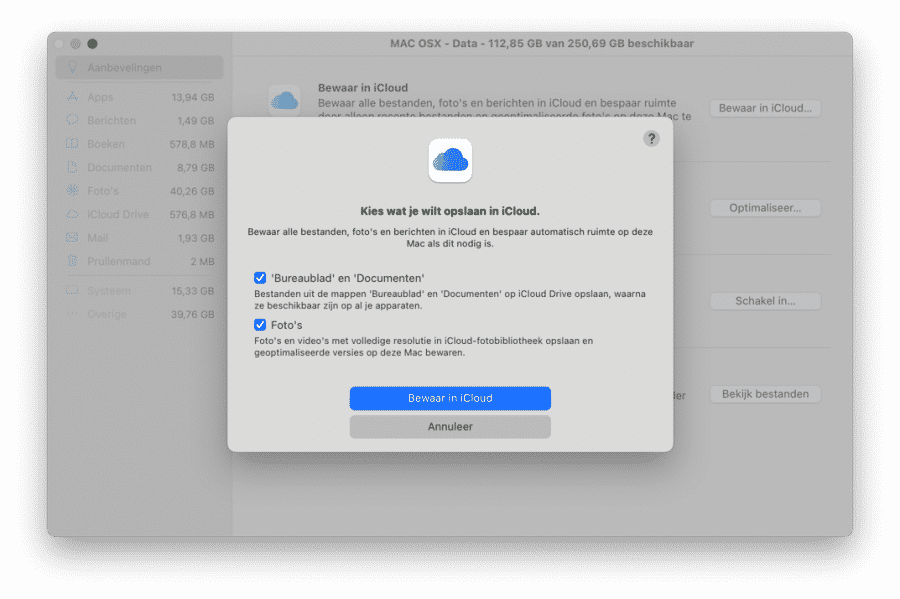
Optimize storage
You can save space on your Mac by optimizing iTunes. Doing this will remove TV shows and music files from your iTunes library that have already been viewed.
You can always download them again because you have purchased them. If this is what you want to save space click on optimize storage.
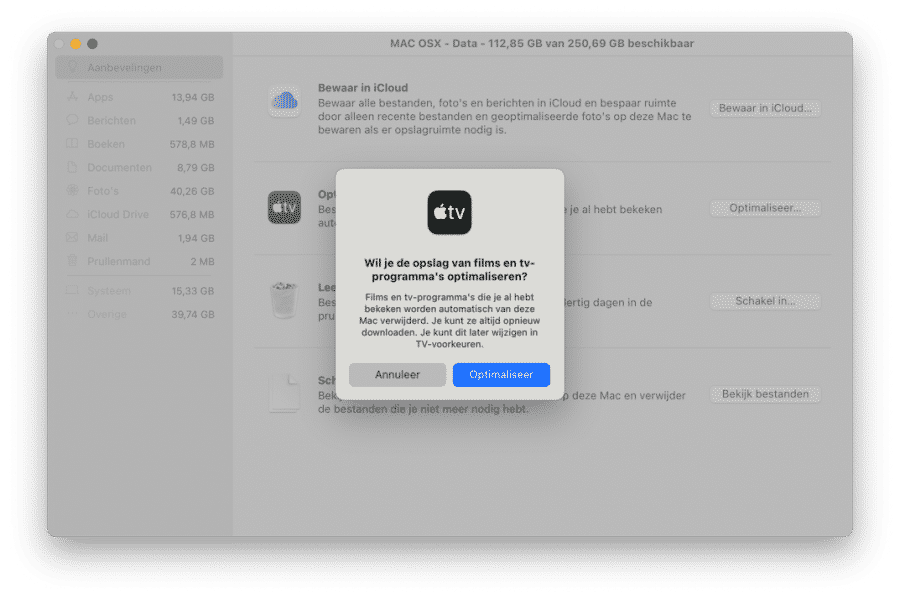
Empty trash automatically
The Recycle Bin can often hide many discarded saved files with the intention of deleting these files.
However, sometimes emptying the Trash on your Mac is forgotten. Important files are not often saved to the Recycle Bin, so enabling Empty Recycle Bin automatically is a good solution. Files that have been in the trash for more than 30 days will be automatically deleted.
If you're not sure whether you should enable this option, open the Trash, select all the files in the Trash, and then press the Command + I key combination. macOS will then display how much space the files contain together and you can determine whether you want to empty the trash or not.
Clean up documents
This “clean documents” option identifies large files – downloads and other size files that may be out of date.
When you click View Files, a new window will appear with a list of files and a number of tabs. Check all categories and consider which files you no longer use and can delete. In some categories you can delete files immediately and permanently by clicking the “delete” button at the bottom.
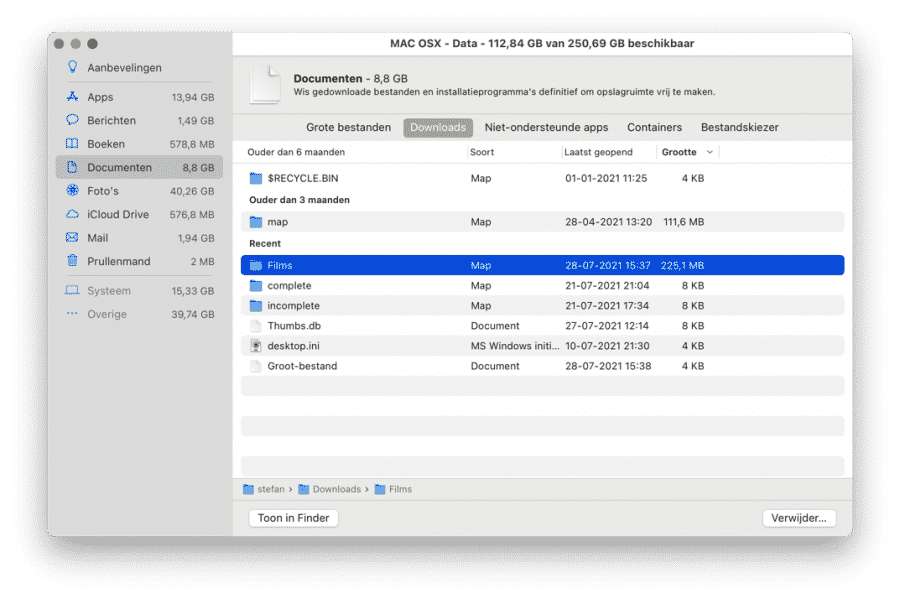
Use CleanMyMac to automatically clean and optimize your Mac startup disk
You can of course repeat all the methods I described above every month. It is not difficult in itself, but it is a lot of work. You can save a lot of work by automating these methods described.
With CleanMyMac you can completely clean and optimize your Mac startup disk in no time.
CleanMyMac has a handy option to quickly scan the startup disk for old files and delete them where necessary. This option is called: Smart scan.
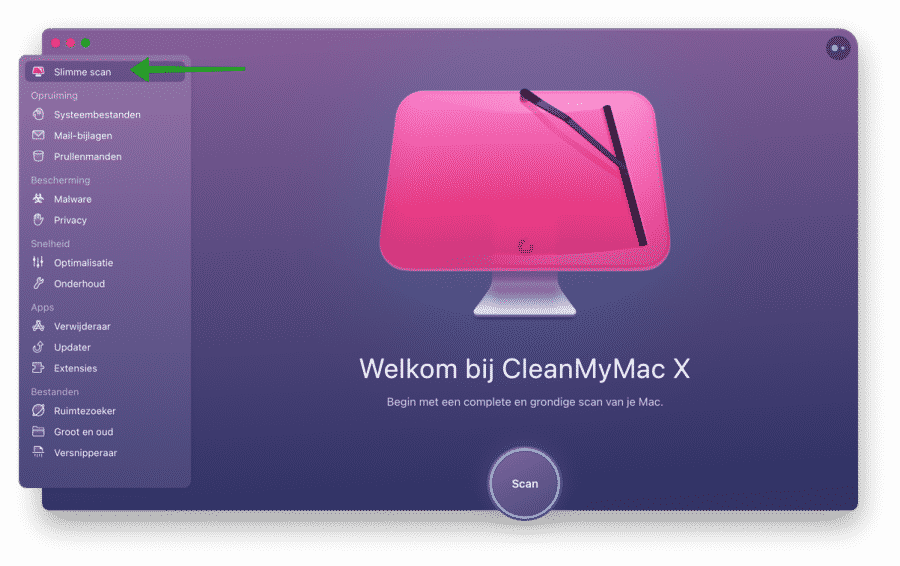
After clicking on Smart Scan, CleanMyMac will start searching for files that can be deleted to solve your startup disk problem on Mac.
Files found by CleanMyMac can be safely deleted and often clear up GBs of scrolling space.
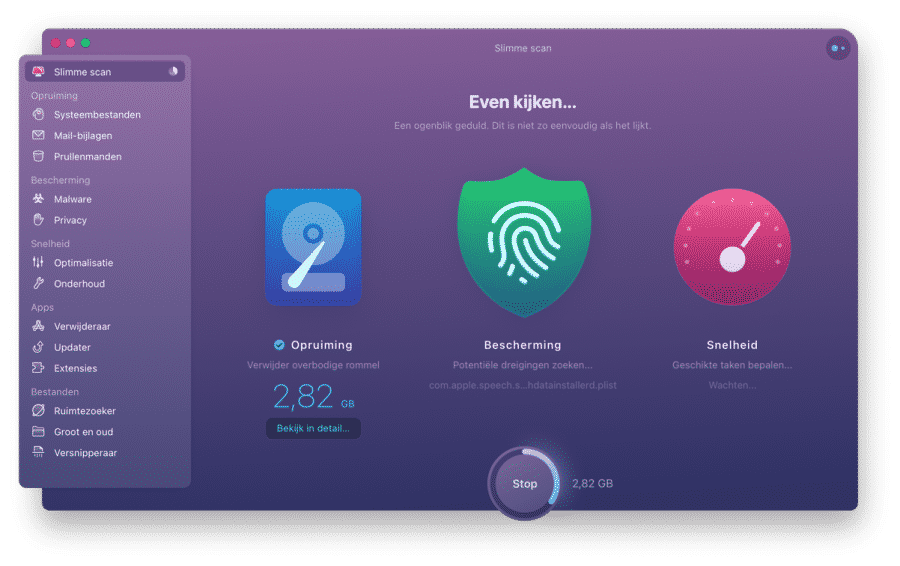
When CleanMyMac has finished searching for large files to free up your startup disk, click Run to delete the found files. No private or important system files will be lost by cleaning up your Mac with CleanMyMac.
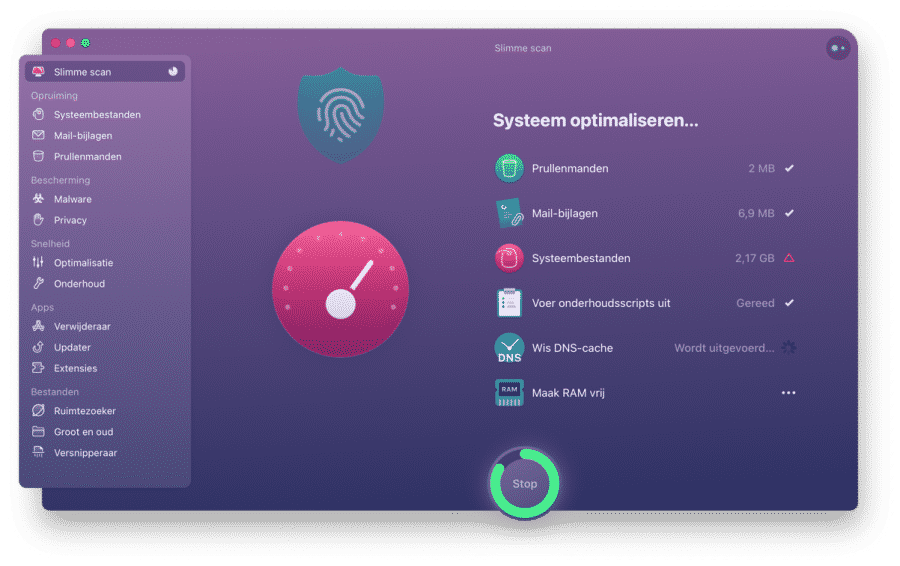
Under Utilities on the left side of the menu in CleanMyMac you will find Uninstaller.
By using the uninstaller in CleanMyMac you can identify and remove apps that are taking up a lot of space on your Mac startup disk. Click Uninstaller and sort the apps by Size.
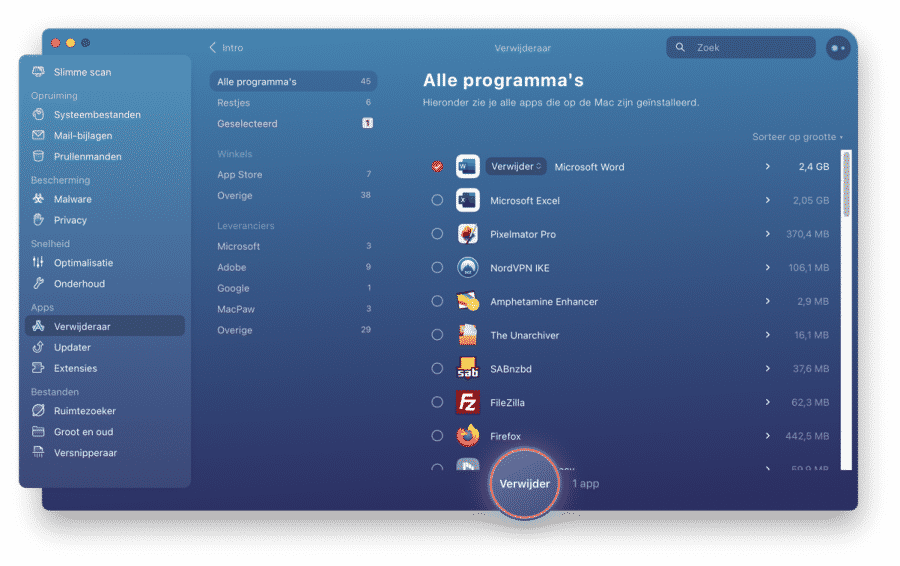
Now identify applications that are taking up a lot of space and where necessary remove them from your Mac. Click the checkbox in front of the application name and select the Remove button. CleanMyMac will now completely remove the application and associated files from your Mac startup disk.
CleanMyMac is highly recommended. I have been using it myself for years.
Hopefully these tips and information have helped you get rid of the startup disk getting full notification from your Mac. In another article I described how your Make your Mac faster.
I hope this helped you. Thank you for reading!


Dear Stephen,
I keep getting the message that my storage space is full and I can't download anything anymore. Yet it says in storage management that I still have 29 GB of space left.
Any idea how I can solve this?
Greetings,
Marieke
Hello Marieke, not directly, which error message is exactly? Have you tried freeing up disk space? Recommendations state specifically for each component or file what can be freed and which types of files take up a lot of disk space. Greetings, Stefan
Hello, it has happened to me now. After 30 years I ignored the message on my Mac saying “Disk is almost full”… and finally it was really full…. with the result that there is now even too little space to start up. It also doesn't work from safe mode. Now I'll let you continue writing to my son, he's trying to help me, he's an IT guy but not a real MacFan.
Here he comes:
“I tried to create a bootable USB, but it is not recognized with bootable disks, even after pram. Only the renovated partition and normal system disk are visible. Then I went through recovery and launched Terminal. However, deleting files via command line does not work either. Message drive is in system read only or something like that. Unfortunately no sudo installed so those command lines are not available. The only option I can think of is copying all files to USB via Terminal and reinstalling the system. “
This is it so far. Maybe some good advice from you? Thank you and greetings, Rit.
Hello Rit, I think it is a vague issue. An internal hard disk that is in “read only” mode… Make sure that you have selected the right disk with Terminal, this is often a problem with external disks. I don't see a solution right now. I would indeed format the drive and reinstall macOS, something is going wrong on your system and solving it may cause another problem. Good luck! Greetings, Stefan.
I have 2 internal hard drives, I forgot to mention that. The first disk, the system disk, was full, partly due to the many projects in iMovie, I think. Too full to start up. I made an install disk and put the system on my second hard drive for the time being. There was still just enough room. From here we cleaned up the system disk plus a backup to our internal server. I'll do a clean install, just to be sure. I learned my lesson though, never ignore messages like “your disk is almost full”…..
Thank you for your quick response, greetings, Rit
Hello Rit, I was not aware that if the primary startup disk is full, macOS will no longer restart. Good to know. It should be possible to clean the iMovie project files via Terminal? You can simply look this up via Terminal and then rm -rf (delete). Good luck! Greetings, Stefan.
Nice description of the need and means to clean up regularly. I'm missing one thing: what to do if deleting/cleaning/optimizing fails because there is not enough memory space available even for that? (On my wife's MacBook Pro there is still about 500 MB free of 250 Gb...)
In all my attempts to help I run into this catch22...
Hello Peter, Thanks! I recommend starting the Mac in safe mode and cleaning up apps and unnecessary files from there to free up disk space. You can also delete apps with 500 MB of free disk space.
https://support.apple.com/nl-nl/HT201262
Greetings, Stefan
Thanks for your efforts, Stefan!
Greetings,
angelina
Glad I could help. Thanks for your response! 🙂